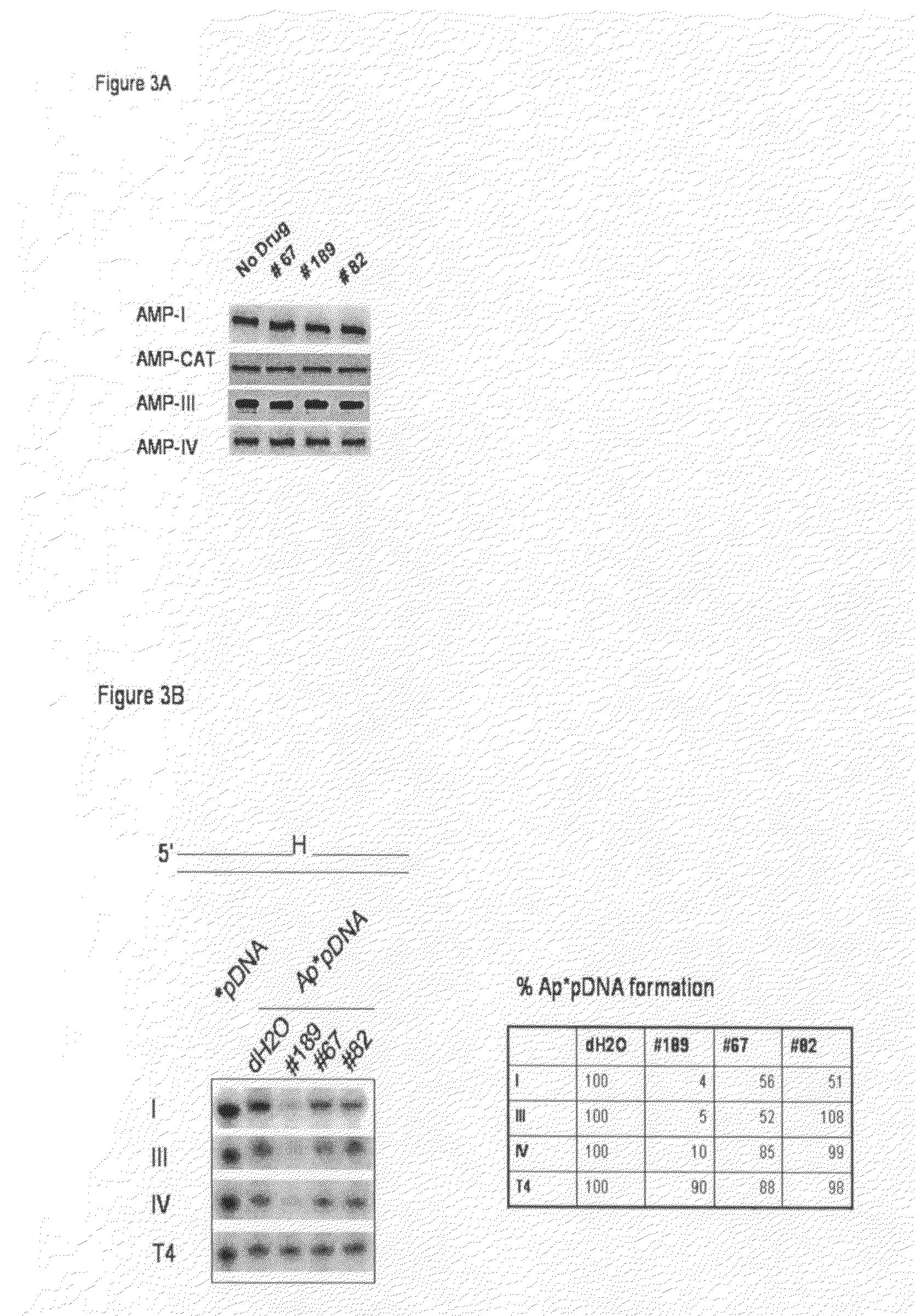Compounds that inhibit human DNA ligases and methods of treating cancer
a technology of human dna ligases and compounds, applied in the field of compounds that inhibit human dna ligases and methods of treating cancer, can solve the problems of limited use of many agents used in cancer treatment, and achieve the effects of inhibiting cell growth, and potentiating the cytotoxic effect of dna damaging agents
- Summary
- Abstract
- Description
- Claims
- Application Information
AI Technical Summary
Benefits of technology
Problems solved by technology
Method used
Image
Examples
Embodiment Construction
[0043]Materials and Methods
[0044]Chemicals.
[0045]Compounds identified by CADD screening were purchased from ChemBridge, ChemDiv, MayBridge, MDD, Nanosyn, Specs, Timtec, and Tripos. 189 was from Specs, and 82 and 67 were from Chemdiv. Tenmillimolar stocks were prepared in DMSO and stored at −20° C. The molecular masses of three compounds 67, 82 and 189 were confirmed by mass spectrometry in the University of Maryland School of Pharmacy facility.
[0046]Proteins.
[0047]Recombinant human DNA ligase I was purified as described previously (22, 29). T4 DNA ligase was purchased from NEB.
[0048]DNA Joining Assays.
[0049]Candidate ligase inhibitors identified by CADD were assayed for their ability to inhibit hLigI and T4 DNA ligase using a high-throughput, fluorescence energy transfer-based DNA joining assay (22). Duplicate reactions (30 μL) containing 10 pmol of nicked DNA substrate and either 0.25 pmol of hLigI or 10 units of T4 DNA ligase were incubated in the presence or absence of 100 μmol / L...
PUM
| Property | Measurement | Unit |
|---|---|---|
| Temperature | aaaaa | aaaaa |
| Volume | aaaaa | aaaaa |
| Volume | aaaaa | aaaaa |
Abstract
Description
Claims
Application Information
 Login to View More
Login to View More - R&D
- Intellectual Property
- Life Sciences
- Materials
- Tech Scout
- Unparalleled Data Quality
- Higher Quality Content
- 60% Fewer Hallucinations
Browse by: Latest US Patents, China's latest patents, Technical Efficacy Thesaurus, Application Domain, Technology Topic, Popular Technical Reports.
© 2025 PatSnap. All rights reserved.Legal|Privacy policy|Modern Slavery Act Transparency Statement|Sitemap|About US| Contact US: help@patsnap.com



